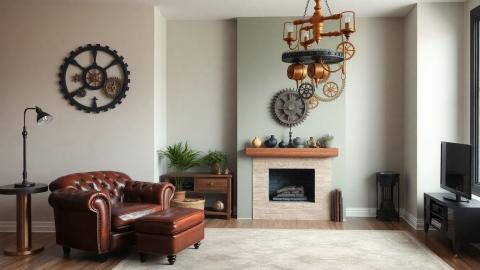Contemporary Interior Design: Embracing Timeless Elegance with Modern Flair
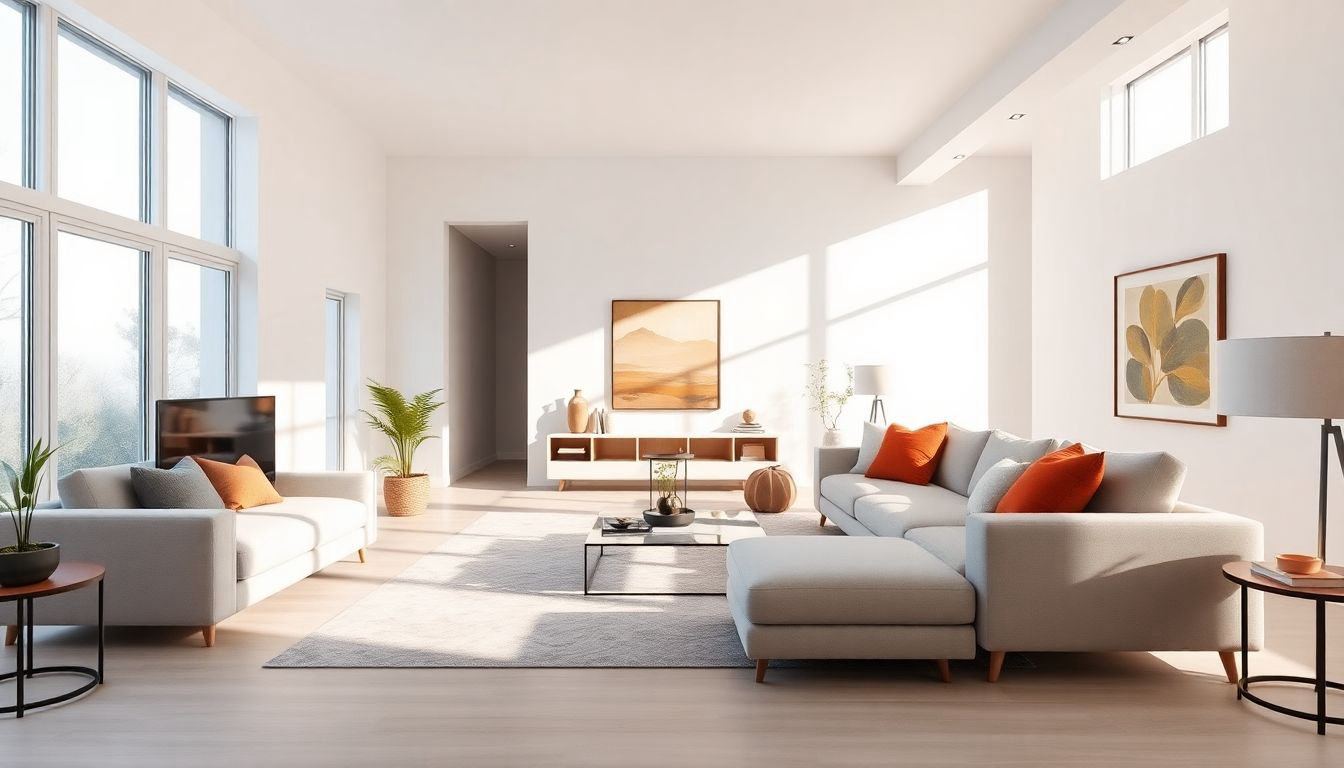
In the ever-evolving world of interior design, Contemporary style has emerged as a beacon of sophistication, blending timeless elegance with modern sensibilities. This dynamic approach to home decor captures the essence of the present moment while remaining adaptable to future trends. Contemporary interiors are characterized by their clean lines, neutral color palettes, and a harmonious balance between form and function. As we delve into the intricacies of this popular design aesthetic, we'll explore how it differs from other styles, its key elements, and practical ways to incorporate it into your living spaces.
The Essence of Contemporary Design
Contemporary interior design is often misunderstood or confused with modern design. While both styles share some similarities, they are distinctly different. Modern design refers to a specific time period, typically from the early to mid-20th century, with key figures like Le Corbusier, Charles and Ray Eames, and Florence Knoll leading the movement. Contemporary design, on the other hand, is constantly evolving and reflects the popular styles of the present day.
Audrey Scheck of Audrey Scheck Design explains, "While modern design refers to a specific time period, contemporary design is a more loose term designating both current and future design trends. Contemporary design evolves as interior design trends come and go." This fluidity allows contemporary spaces to feel fresh and relevant, adapting to changing tastes and technologies.
Key Elements of Contemporary Interior Design
1. Clean Lines and Open Spaces
One of the hallmarks of contemporary design is its emphasis on clean, crisp lines and open floor plans. This approach creates a sense of spaciousness and allows for easy movement throughout the home. Guillaume Coutheillas, founder of frenchCALIFORNIA, notes, "Today, peoples' homes function as their offices, entertainment space, and more, and a minimalist design helps to organize these spaces in intuitive, yet aesthetically pleasing ways."
2. Neutral Color Palette with Bold Accents
Contemporary interiors often feature a neutral base palette of whites, grays, and beiges. This creates a calm and sophisticated backdrop that can be easily updated with bold accent colors. As Scheck points out, "A neutral base allows for even more flexibility to introduce color through fun accents like artwork, textiles, and decorative accents."
3. Emphasis on Natural Light and Materials
Contemporary design places a strong emphasis on bringing natural light into interiors. Large windows, skylights, and open floor plans help to create bright, airy spaces. Additionally, the use of natural materials like wood, stone, and organic fibers adds warmth and texture to contemporary interiors.
4. Minimalist Approach to Furnishings
In contemporary spaces, less is often more. Furniture pieces are chosen for their simplicity and functionality, with clean lines and minimal ornamentation. As Jane Lockhart, founder of Jane Lockhart Design, explains, "The flavor of this style has morphed beyond downtown lofts in old urban manufacturing brick buildings with vintage elements. Nowadays, the industrial style celebrates key building pieces that have a heritage and long-lasting quality to them like metal doors, trim work, wood beams etc."
5. Innovative Use of Technology
Contemporary design embraces the latest technological advancements, seamlessly integrating smart home features and energy-efficient solutions into the overall aesthetic. This fusion of form and function is a key aspect of contemporary living.
Incorporating Contemporary Design in Your Home
Now that we've explored the key elements of contemporary design, let's look at practical ways to incorporate this style into different areas of your home.
Living Room
The living room is often the heart of a contemporary home, showcasing the style's emphasis on open spaces and clean lines. Consider these tips:
- Choose a neutral color scheme for walls and major furniture pieces
- Add pops of color through artwork, throw pillows, or a statement rug
- Opt for furniture with sleek lines and raised legs to create a sense of openness
- Incorporate natural materials like wood or stone in coffee tables or accent pieces
- Use large windows or glass doors to maximize natural light
Kitchen
Contemporary kitchens blend functionality with style, creating spaces that are both efficient and visually appealing:
- Opt for flat-panel cabinets in neutral colors or natural wood tones
- Choose sleek, handle-free cabinet designs for a clean look
- Incorporate stainless steel appliances for a modern touch
- Use a minimalist backsplash in glass or large-format tiles
- Add warmth with wooden accents or a statement light fixture
Bedroom
Create a serene and sophisticated retreat with these contemporary bedroom design ideas:
- Choose a low-profile bed with a simple headboard
- Use a neutral color palette with one or two bold accent colors
- Incorporate texture through bedding, curtains, or a plush area rug
- Opt for minimalist bedside tables and lamps
- Create a focal point with a large piece of abstract art
Bathroom
Contemporary bathrooms are all about creating a spa-like atmosphere:
- Use large-format tiles or seamless surfaces for walls and floors
- Choose a floating vanity for a sleek, modern look
- Incorporate a frameless glass shower enclosure
- Opt for minimalist fixtures in chrome or brushed nickel
- Add warmth with wood accents or a statement mirror
Balancing Form and Function
One of the challenges in contemporary design is striking the right balance between aesthetics and functionality. While the style emphasizes clean lines and minimalism, it's essential to create spaces that are livable and comfortable. Here are some tips to achieve this balance:
- Invest in high-quality, comfortable furniture that aligns with the contemporary aesthetic
- Incorporate hidden storage solutions to maintain a clutter-free appearance
- Use textured fabrics and materials to add warmth and interest to minimalist spaces
- Balance hard surfaces with soft elements like area rugs or upholstered seating
- Integrate personal touches through carefully curated artwork or meaningful objects
Sustainability in Contemporary Design
As environmental concerns become increasingly important, contemporary design is evolving to incorporate sustainable practices. This shift towards eco-friendly interiors aligns perfectly with the style's emphasis on simplicity and functionality. Consider these sustainable approaches:
- Choose furniture and decor made from recycled or sustainably sourced materials
- Opt for energy-efficient appliances and lighting solutions
- Incorporate indoor plants to improve air quality and add natural elements
- Use low-VOC paints and finishes to reduce indoor air pollution
- Select durable, long-lasting materials to minimize waste and replacement needs
The Future of Contemporary Design
As we look to the future, contemporary design will continue to evolve, influenced by technological advancements, changing lifestyles, and global trends. Some emerging trends to watch include:
- Integration of smart home technology and IoT devices
- Increased focus on biophilic design, bringing nature indoors
- Exploration of new, sustainable materials and manufacturing processes
- Emphasis on multifunctional spaces that adapt to changing needs
- Incorporation of virtual and augmented reality in interior design processes
Contemporary interior design offers a versatile and timeless approach to creating beautiful, functional living spaces. By embracing clean lines, neutral palettes, and a balance of form and function, you can create a home that feels both current and enduring. As designer Robert Stilin notes, "Contemporary design lends itself to comfortable, easy living," making it an ideal choice for modern homeowners seeking a sophisticated yet livable aesthetic.
Whether you're looking to completely revamp your home or simply incorporate elements of contemporary design, remember that the key lies in simplicity, quality, and thoughtful curation. By focusing on these principles, you can create a space that not only looks stunning but also enhances your daily life and reflects your personal style.
References and Further Reading
More Articles

Bauhaus Interior Design: A Century of Influence and Innovation
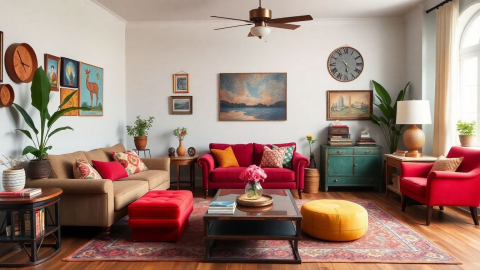
The Art of Eclectic Interior Design: Mastering the Mix
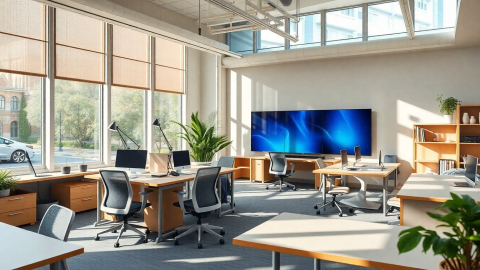
Designing Inspiring Study Spaces: The Art and Science of Productive Learning Environments
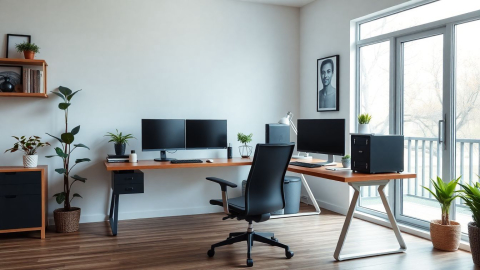
Inspiring Modern Home Office Design for 2024: A Comprehensive Guide
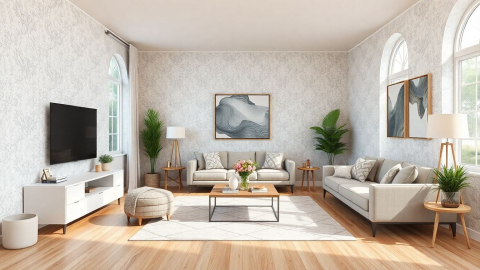
Revolutionizing Interior Design: Harnessing the Power of AI for Stunning Spaces
